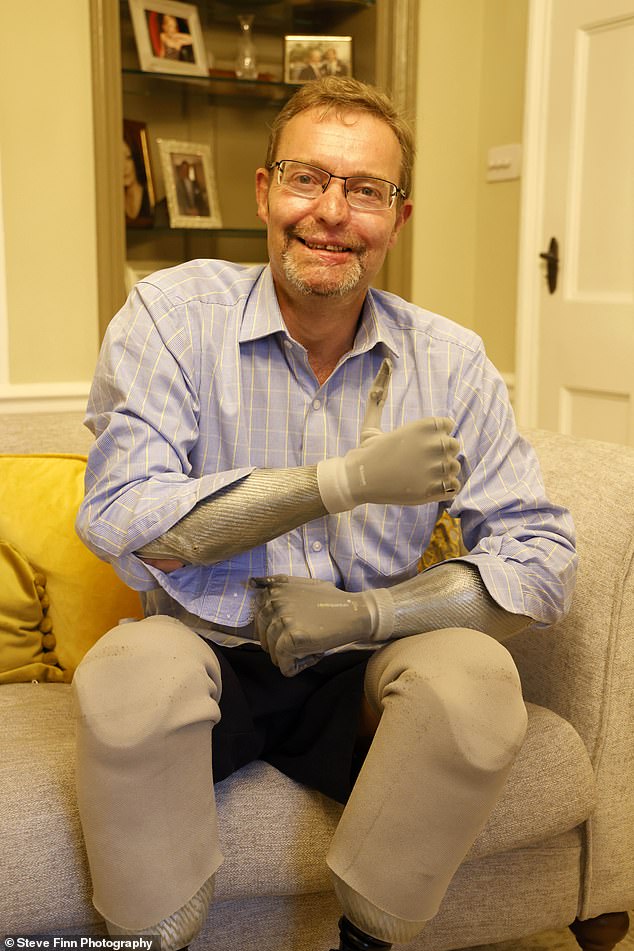- **WARNING: GRAPHIC CONTENT**
People have been urged to know the signs of sepsis after an MP shared how they lost both hands and feet to the condition.
Conservative MP for South Thanet, Craig Mackinlay, thought he had simply had the start of a cold in September.
He would later wake up in the hospital after a 16-day coma to discover that his limbs had turned completely black and would have to be amputated.
Mackinlay, 57, is making a heroic return to his job as a “bionic MP” and has said he also wants to raise awareness of the need to detect sepsis as quickly as possible.
So what are the first signs of this disease which kills around 48,000 Britons a year, which works out to just over five an hour?
MP Craig Mackinlay has broken his silence after losing both hands and feet to sepsis and admitted he was “lucky to be alive” after the horrific disease left him with four prosthetic limbs.

Bacterial infections are one of the most common causes of sepsis. Blood tests may look for an increase in white blood cells, which indicates the presence of an infection.
Sepsis is known as a “silent killer” and occurs when the body’s immune system goes into overdrive in response to an infection such as a urinary tract infection or chest infection.
This violent reaction causes the immune system to damage the body’s own tissue, which can lead to life-threatening organ failure.
The early symptoms of sepsis can be easily confused with milder conditions, meaning it can be difficult to diagnose.
People are advised to look out for six signs that can be identified by the acronym ‘SEPSIS’:
These are: slurred speech or confusion, extreme chills or muscle pain, not urinating for a day, severe difficulty breathing, and mottled or discolored skin.
Anyone who develops any of these symptoms should urgently seek medical help and ask doctors: “Could this be sepsis?”
Other potential signs of sepsis include high temperature (fever), chills and chills, rapid heartbeat and rapid breathing are also indicators.
A patient can deteriorate rapidly if sepsis is not detected at an early stage, so prompt diagnosis and treatment are vital; although this rarely happens.
If caught early, sepsis can be easily treated with antibiotics and intravenous fluids.
But they should be given as soon as sepsis is suspected, given the speed at which patients can deteriorate.
If a patient goes into septic shock, when their blood pressure drops to a dangerously low level, patients only have a 50 percent chance of surviving.
Experts have estimated that for every hour of delay in giving a patient potentially life-saving septic shock, their chances of death increase by 8 percent.
Part of the problem, as Mr Mackinlay has highlighted, is that in the early stages, sepsis can be mistaken for a respiratory infection, flu or an upset stomach.

Craig Mackinlay pictured at St Thomas’ hospital on November 30 with blackened limbs after suffering sepsis.
It is more common and dangerous in older adults, pregnant women, children under one year old, people with chronic illnesses, or those who have weakened immune systems.
Over the past decade, deaths from sepsis have skyrocketed: from 37,000 a year in 2013 to around 48,000 a year now.
Despite repeated awareness campaigns aimed at speeding up diagnosis and treatment, sepsis now causes more deaths than breast, prostate and bowel cancer combined.
It can occur at any age, although it is more common in the elderly and urinary tract infections are among the most common triggers.

